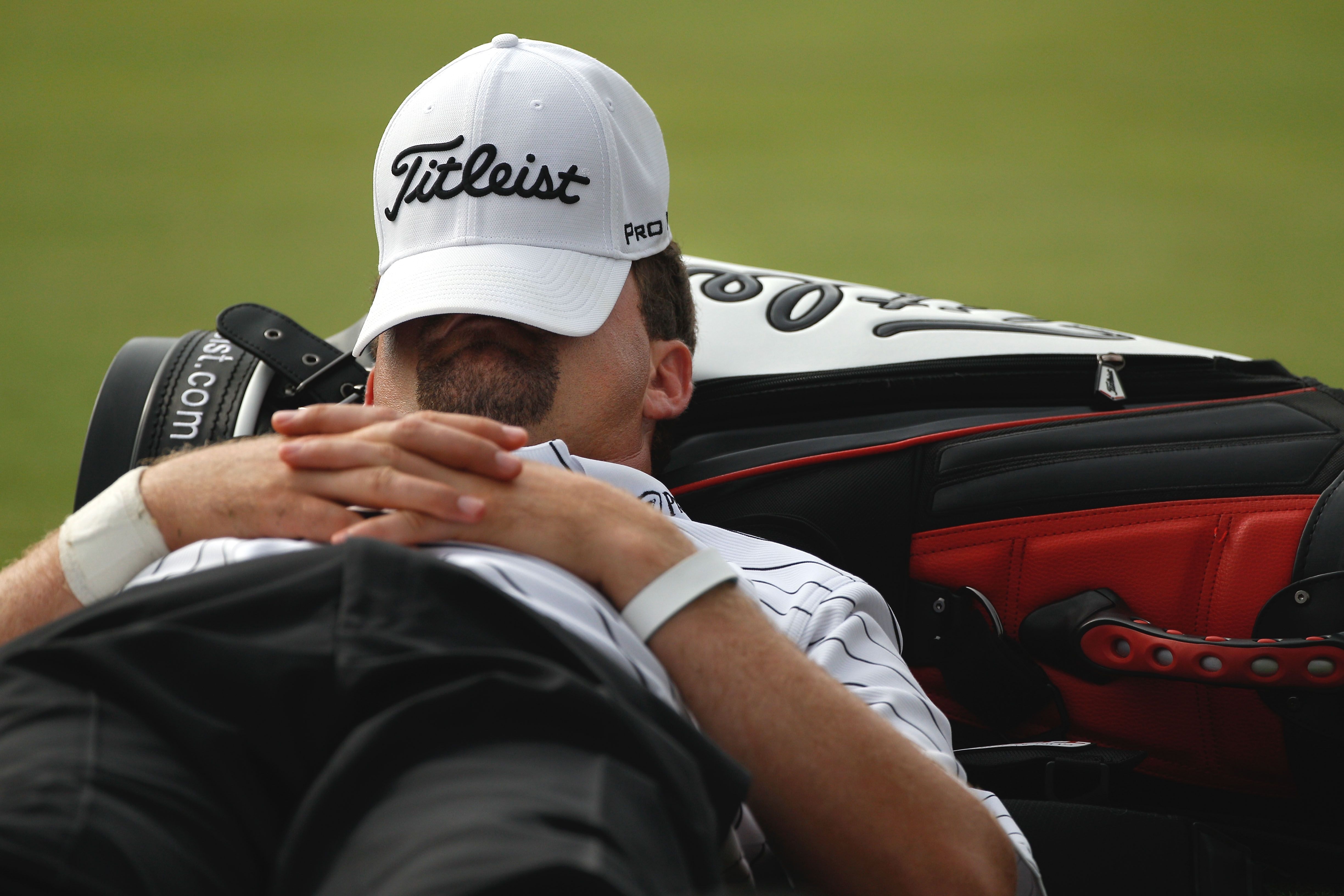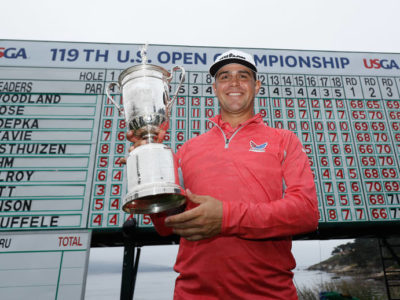Slow Play – “We Have Met the Enemy and He Is Us”
By Ed Travis
The topic of slow play leapt into focus on social media when Brooks Koepka, the No. 1 ranked player in the world and No. 3 ranked, Rory McIlroy, criticized the time a few of their fellow Tour players on their slow play.
This latest reaction was instigated by a video of Bryson DeChambeau taking in excess of two minutes to strike a putt at the Northern Trust.
Dechambeau meticulously conferred with his caddie, studied his greens book, squatted to look at the line, looked at the line standing upright, walked the length of the putt, squatted down to look at the line again, carefully placed the ball in front of the marker, adjusted the ball alignment, used his putter shaft to check the ball alignment, once again walked to the side to look at the line…well, you get the idea. All these machinations took ‘The Mad Scientiest’ more than two minutes and 20 seconds to actually complete his stroke.
If you were his playing companion or waiting in the fairway, while DeChambeau completed this “MAD Routine,” it might throw you off your game. The video clearly showed Justin Thomas fidgeting, while waiting for DeChambeau to finish. First one foot, then the other, a tug of the shirt, a rub of the cheek, plus rolling of the eyes with “Come on already Hit It,” plainly showing on his face.
Reaction on Twitter pummeled DeChambeau and the PGA Tour with incredulousness, outrage and disgust.
The Tour was quick to respond after the tournament was completed. The PGA Tour Chief of Operations Tyler Dennis said,
“We are currently in the process of reviewing this aspect of pace of play and asking ourselves, ‘Is there a better way to do it?’ We think technology definitely plays a key role in all of this and we are thinking about new and innovative ways to use it to address these situations.”
It would seem this is another case of better late than not showing up at all. Slow play by a few players has been an issue on the PGA Tour for many years and the tour has had ample opportunity to solve this nagging problem.
It should be interesting to see if anything substantial comes from this recent viewing, other than taking another firm stance and assigning a committee to “assess the problem.” 
The root cause of slow play is the players. Players cause slow play and the players can fix it…if they want to.
The self-centered attitude, whether the player is a top ten ranked professional or the guy ahead of you last Saturday, who changed clubs three times (only to hit it in the water anyway) is the basic problem.
Slow Play is a lack of respect for others.
Other factors that affect slow play are course architects, who make courses too difficult, coaches not addressing quicker routines, the USGA, with no real all-encompassing rule, the PGA Tour for not enforcing their current rules, plus seven-minute tee time gaps with hidden pins on too greens that run too fast.
 However, most of all, the problem lies with us. The fans who put up with it.
However, most of all, the problem lies with us. The fans who put up with it.
If golf fans decide watch something else, sponsors and advertisers would quickly force the PGA Tour to stop enabling slow play. Lower viewership inevitably would lead to reduced purses on tour and send a clear message straight to Tour players pocketbooks.
Slow play on the Tour will go on until fans and sponsors decide enough is enough.
As far as the slow guy at your local club, rangers can work wonders, especially if they are properly trained to manage the idiot-factor inherent in self-indulgent me-only players. Not an easy task for golf club managers, but it’s a lot better than shrinking a customer base
As Walt Kelly’s character Pogo said, “We have met the enemy and he is us.”
European Tour Takes Action on Slow Play
By Fred Altvater
Last month while PGA Tour players were taking social media shots at slow play violaters and the PGA Tour Brass were saying, we are looking into the problem, the European Tour’s Keith Pelley announced a bold new plan of action against slow play by tour professionals.
The European Plan is structured into four areas of concern and training; Regulation, Education, Innovation and Field Size. 
- Regulation
When players are being monitored or timed, two bad times will incur a one-shot penalty. Players will have the option to request one-time extension per round, giving an additional 40 seconds to hit a shot on this request.
Fines for slow play will increase significantly. A player who is timed 15 times during the 2020 season will have to pay £26,000 in fines as opposed to £9,000 this season.
- Education
All new tour members will be assigned a dedicated referee to help educate them on pace of play at the start of their European Tour career.
Current European Tour members will be required to pass an interactive online rules test. The test will also be on-going and required to retain membership every three years.
In addition, educational videos will be produced by the European Tour on key rules and pace of play policies, then shared with the players throughout the season in an effort to avoid unnecessary rulings and ensure they completely understand the Pace of Play policy.
- Innovation
 A trial Pace-of-Play system will be conducted at the BMW PGA Championship from September 19-22, 2019. This will provide referees with the times for every group through every hole to make sure that no gaps are missed.
A trial Pace-of-Play system will be conducted at the BMW PGA Championship from September 19-22, 2019. This will provide referees with the times for every group through every hole to make sure that no gaps are missed.
- Field Size
The number of players at a tournament will be reduced from 156 to 144. This will create space for referees to push groups over the Thursday and Friday rounds.
This could be an extremely helpful solution, as fewer players will allow a larger gap between starting times and prevent backups at short par-four’s and reachable par-five holes.
While the PGA Tour is studying the problem, the European Tour has taken action and devised a solution, if it is effectively enforced.
Kudos to Keith Pelley and his staff……….PGA Tour are you listening?
A Young Golfer’s Next Steps
By Richard Todd
In last month’s issue of Ohio Golf Journal, I wrote about ways to get kids involved in golf through exciting uses of science, technology, engineering, math, and even comic books!
Once you have a child’s curiosity and willingness to put down their smart phone and tablet to actually get on a golf course the next step on their golfing path is teaching them course etiquette.
The rules only affect others on the course during a tournament, but proper golf etiquette affects everyone playing, every time. 
I was playing a course in North Carolina last month, when we caught up to a father with two children, a boy about ten and a girl about seven. They were excruciatingly slow and hit each shot no further than 20 yards.
While waiting on a tee box, I started chatting with two ladies from the Northeast, Long Island and Boston. We agreed that there comes a time when you need to ‘pick up’ your ball and move on to the next hole. This can be a mental challenge and education on this topic can save you from a warning by the ranger for slow play.
An emphasis on pace of play is important and has the most impact on other golfers.
I know we all want our money’s worth, when we make a purchase for a round of golf, but that needs to be tempered with being a good golf citizen and showing concern for others on the course.
Luckily, dad and the kids only played nine holes with his children, so we were able to enjoy a much quicker back nine. I think it is commendable that a father is taking time to teach his children the great game of golf, but maybe a shorter course, or the practice area would be more advisable, until the children are ready for a bigger golf course.
We did encounter another family on the second nine, but they willingly allowed us to play through. I thanked them multiple times and played quickly. Their consideration was much appreciated.
Knowing how to behave on the course is not only the right thing to do, but that knowledge can transfer to a child’s daily interactions for the rest of their lives. Proper conduct, respect for others, and honestly are all traits everyone should emulate.
Be sure to consider the groups ahead and behind you the next time you visit the golf course.










